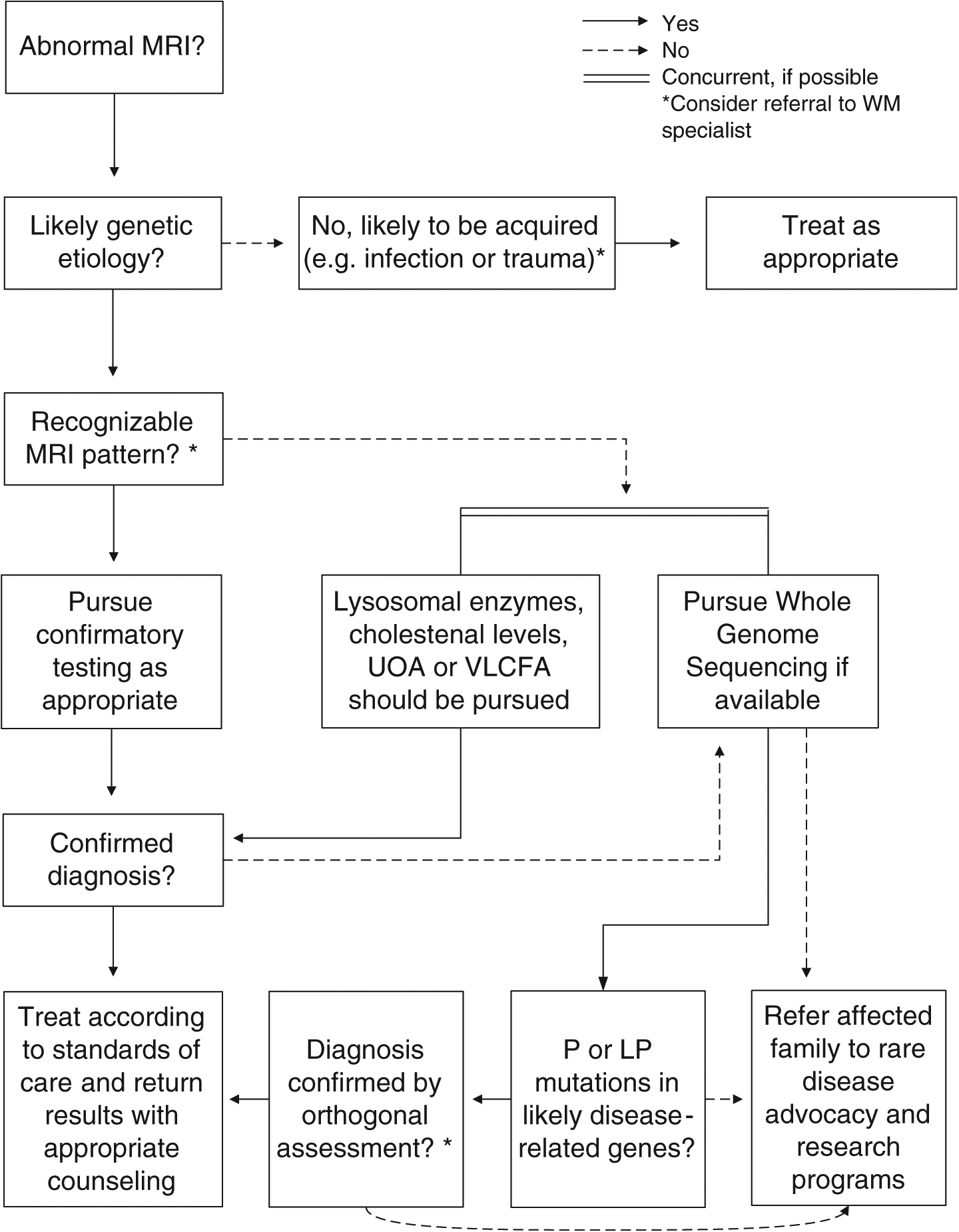FIGURE 4:

Diagnostic testing algorithm for patients with a suspected white matter (WM) disorder. A decision flow chart to determine appropriate diagnostic approaches given clinical assessment and magnetic resonance imaging (MRI) pattern analysis is shown. First- line biochemical testing, including very long chain fatty acids (VLCFAs), lysosomal enzymes, and urine organic acids (UOAs), and in the appropriate context cholestenol levels, are recommended to provide rapid diagnosis for treatable leukodystrophies. If the MRI pattern cannot be associated with a previously recognized leukodystrophy, rapid genome sequencing (GS; if available) should be pursued to shorten the diagnostic odyssey and provide the greatest likelihood of definitive diagnosis. Targeted molecular testing may be considered if the clinical picture or MRI is characteristic of a single specific recognizable disorder but does not demonstrate the same level of efficacy as broader exome sequencing or GS testing in the absence of salient clinical features. LP, likely pathogenic; P = pathogenic
